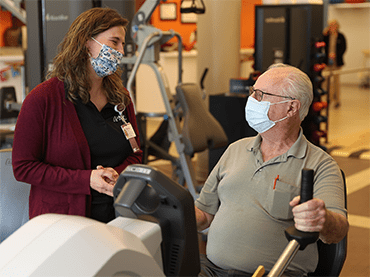Now 78, Gerald Wilson once loved to travel throughout the United States and around the world to hunt wild game. Raised in Covington, Pa., he returned home to Tioga County to care for his ailing mother. He soon became one of the most recognized people in town — and one of the busiest.
Jerry’s career spans work as a Pennsylvania state trooper, a commercial driver’s license tester for the Pennsylvania Department of Transportation, and he also drove a school bus for 45 years — and still co-owns the bus company. A man of many interests, he’s always been someone who looks ahead to the next goal.
He admits that a Parkinson’s disease diagnosis in 2007 slowed him down a bit and lead to bouts of depression. According to the Parkinson’s Foundation, depression is part of the disease itself as it causes changes in the brain’s chemistry.
“This disease gets worse all the time,” he said. “But I keep my mind focused on moving ahead.”
And he’s done just that. When medicines no longer worked well to relieve his symptoms — specifically balance and tremors — he underwent a deep brain stimulation (DBS) procedure in 2013. That procedure relieved his most troublesome symptoms for many years, but a second DBS procedure in 2019 was less successful.
For people with Parkinson’s, exercise can help control symptoms and improve overall health and well-being. Eager to get back to the busy, active life he had always enjoyed, Jerry began working with a physical therapist at the UPMC Outpatient Center in Mansfield, Pa., near his home. And he did see improvements.
“Staying focused mentally on the exercises helped me get stronger both mentally and physically,” he said.
When he heard about LSVT BIG®, an evidence-based physical therapy protocol primarily for Parkinson’s patients, Jerry was eager to get started. He was delighted to learn it was newly available at the Mansfield location. (LSVT BIG also is offered at UPMC Physical Therapy in Wellsboro.)
A BIG difference
People with Parkinson’s or any movement disorder think they are moving normally. Instead, they shuffle their feet, and their movements are slower, says Mindy Hanawalt, MPT, a UPMC physical therapist who is also certified as an LSVT BIG therapist. “With LSVT, you’re reteaching the body how to move normally,” she explained.
Participants attend an hour-long session four days a week for four consecutive weeks. Mindy said the intense one-on-one therapy that’s tailored to each person’s goals is what makes LSVT so successful. “I would stand near Jerry doing the same exercises, so I could tweak a step or hand movement that wasn’t quite right,” she explained.
“The program was very strenuous and I had to stay focused on each movement,” said Jerry. “But Mindy was right there doing every exercise with me. That made me feel like somebody really cared, that we were working together to get this done.”
Jerry also was given a DVD recording of the exercises so he could practice at home. He said LSVT BIG therapy significantly improved his mobility and had him “feeling very good.”
He valued the program so much that after he finished formal LSVT therapy, he continued working with Mindy. “He worked so hard to get there, we wanted to help him keep going,” said Mindy.
“Because Jerry is out in the community so much, we did high-level balance training so he would be more comfortable walking outside,” she added. They also worked on functional activities of daily life that he wanted to fine tune.
In December 2021, Jerry experienced a cardiac issue that required surgery at UPMC Williamsport and weeks of recovery time. After getting the okay from his doctor, Jerry completed a two-week LSVT ‘tune-up’ program. “He is doing amazingly well,” said Mindy.
“I am so thankful for everything Mindy has done to help me,” said Jerry. “I worked really hard in the LSVT program. While I’m not quite back to where I was before the heart issue, I will get there,” he added. “I just keep going forward.”

















